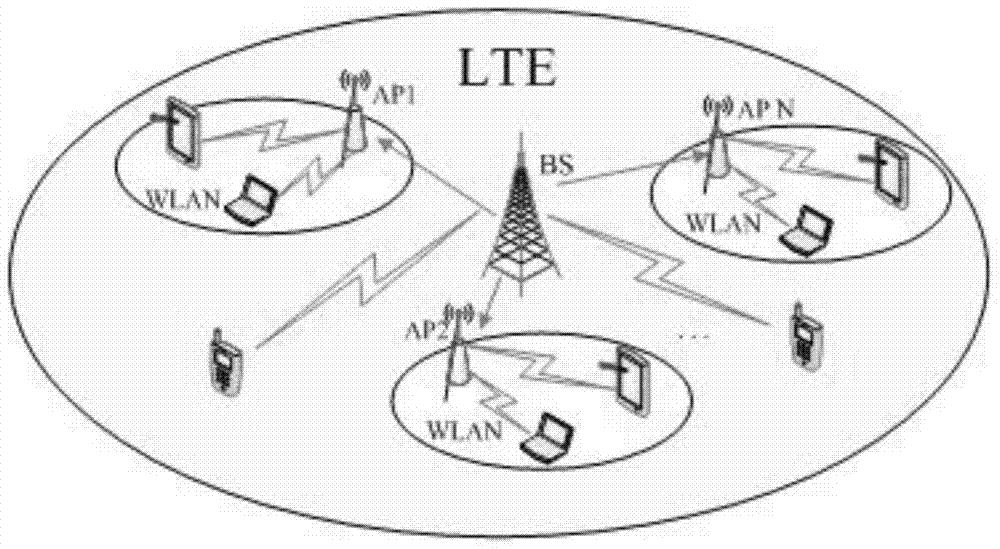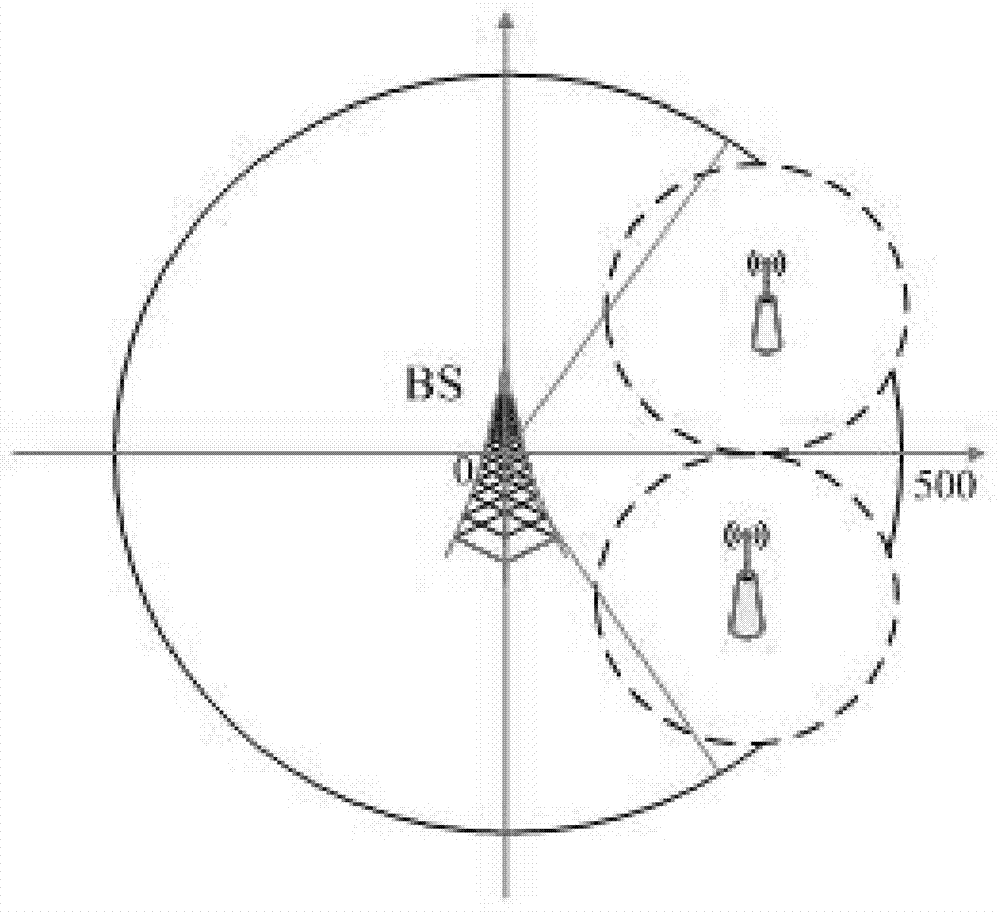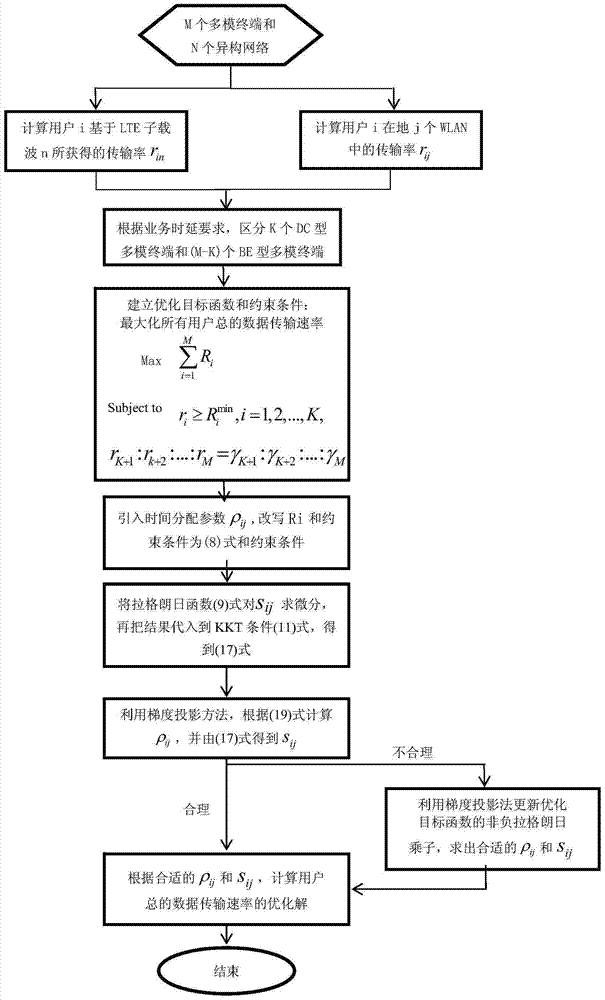Optimal radio resource method based on time-delay differentiated services and proportional rate constraints
A rate-constrained, service-differentiated technology, applied in wireless communications, electrical components, multi-frequency code systems, etc., to solve the problems of inefficient allocation and utilization of wireless resources, regardless of service type and user fairness
- Summary
- Abstract
- Description
- Claims
- Application Information
AI Technical Summary
Problems solved by technology
Method used
Image
Examples
Embodiment Construction
[0141] The invention will be described in further detail below in conjunction with the accompanying drawings.
[0142] Such as image 3 As shown, the present invention provides a wireless resource optimization management method based on time delay differentiated services and proportional rate constraints, the method includes the following steps:
[0143] Step 1: Assume that in the LTE-WLAN heterogeneous network, there are M active multi-mode terminals supporting different service types and N available wireless access technologies; in the LTE network, it is assumed that the wireless channel between the base station and the terminal is Frequency-selective Rayleigh fading channel, the channel per subcarrier is narrow, so it is flat fading; r in Indicates the transmission rate obtained by user i based on subcarrier n in each OFDM symbol time interval, and its value depends on the channel gain h in and user i based on the allocated power P on subcarrier n in ;r in usually expre...
PUM
 Login to View More
Login to View More Abstract
Description
Claims
Application Information
 Login to View More
Login to View More - R&D
- Intellectual Property
- Life Sciences
- Materials
- Tech Scout
- Unparalleled Data Quality
- Higher Quality Content
- 60% Fewer Hallucinations
Browse by: Latest US Patents, China's latest patents, Technical Efficacy Thesaurus, Application Domain, Technology Topic, Popular Technical Reports.
© 2025 PatSnap. All rights reserved.Legal|Privacy policy|Modern Slavery Act Transparency Statement|Sitemap|About US| Contact US: help@patsnap.com



